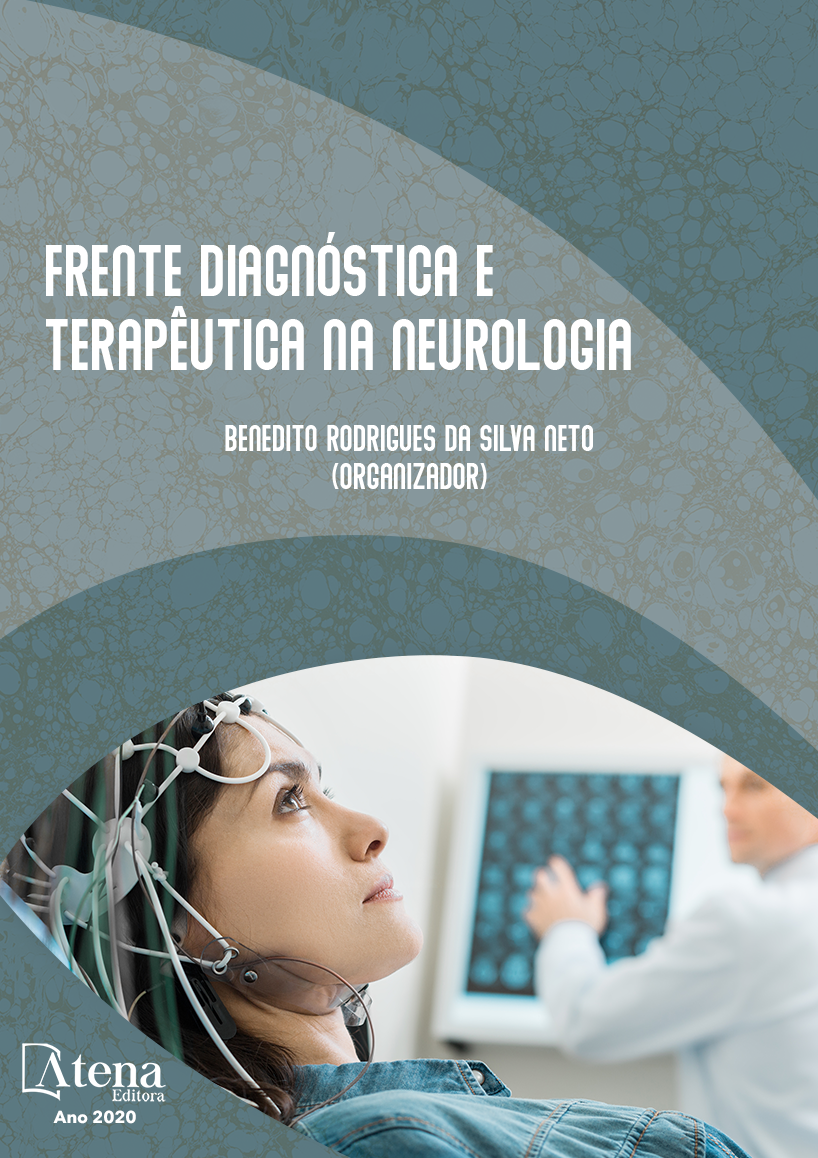
APRESENTAÇÃO ATÍPICA DE ISQUEMIA ENCEFÁLICA: SÍNDROME DE ONE AND A HALF COM HEMIPARESTESIA, HEMIPARESIA E HEMIATAXIA
RELATO DE CASO: Paciente
feminina, 81 anos, médica aposentada,
brasileira, hipertensa e sem outras
comorbidades. Refere ter acordado com diplopia
associada à hemiparesia e hemiparestesia em
dimídio direito. Os sintomas surgiram de forma
súbita e não havia queixas nos dias ou semanas
anteriores. Ao exame, estava orientada,
com força grau 5 nos quatro membros, com
hemiataxia cerebelar à direita, sem disartria ou
disfagia. Relatava hiperalgesia e alodinia em
dimídio direito, porém sem alteração objetiva ao
exame neurológico. Os reflexos eram grau 2,
simétricos; as pupilas isocóricas e fotorreagentes,
com 3 mm. Havia restrição completa da mirada
horizontal esquerda. Na mirada lateral direita
havia abdução normal do olho direito associada
a nistagmo no olho esquerdo em adução. Não
havia ptose e os demais nervos cranianos
estavam sem alterações. Foram realizados
ecocardiograma transtorácico, doppler cervical
e holter de 24 horas com todos os resultados
normais. Ressonância magnética de crânio
indicou área de hiperintensidade em topografia
pontina unilateral à esquerda e o mapa de ADC
evidenciou restrição à difusão paramediana em
ponte baixa do mesmo lado, ambos sugestivos
de infarto agudo. O exame clínico e avaliação
radiológica são compatíveis com a Síndrome
One and a Half associada a hemiparesia,
hemiparestesia e hemiataxia contralaterais.
Há uma série de síndromes denominadas
transtornos do espectro da síndrome One and
a Half. Contudo, não encontramos na literatura
apresentação clínica semelhante a este caso.
APRESENTAÇÃO ATÍPICA DE ISQUEMIA ENCEFÁLICA: SÍNDROME DE ONE AND A HALF COM HEMIPARESTESIA, HEMIPARESIA E HEMIATAXIA
-
DOI: 10.22533/at.ed.5782028014
-
Palavras-chave: Síndrome One and a Half; infarto cerebral; motricidade ocular.
-
Keywords: One and a Half Syndrome, Brain ischemia, Ocular motility
-
Abstract:
CASE REPORT: Female patient, 81 years old, retired doctor, Brazilian,
systemic hypertension and without other comorbidities. She said she had woken up
with diplopia associated with hemiparesis and right dimid hemiparesis, all symptoms
came on suddenly and there were no complaints in the previous days or weeks. She
was alert, with 5 degree strength in all four limbs, right cerebellar hemiataxia, without
dysarthria or dysphagia. She reported hyperalgesia and allodynia in the right dimid, but
without objective alteration on neurological examination. The reflexes were symmetrical
2 degree, the isochoric and photoreactive pupils 3 mm. There was complete restriction
of the left horizontal glance. In the right lateral gaze there was normal abduction of
the right eye associated with nystagmus in the left eye in adduction. There was no
ptosis and the other cranial nerves were unchanged. Transthoracic echocardiography,
cervical Doppler and 24-hour Holter were performed and all did not show any
abnormalities. Cranial magnetic resonance imaging indicated an area of hyperintensity
in the left unilateral pontine topography, and the DWI showed restriction to paramedian
low-bridged diffusion on the same side, both suggestive of acute infarction. Clinical
examination and radiological evaluation are compatible with One and a Half Syndrome
associated with contralateral hemiparesis, hemiparesthesia and hemiataxia. There
are a number of syndromes called spectrum disorders of One and a Half syndrome.
However, we did not find in the literature a clinical presentation similar to this case.
-
Número de páginas: 9
- Carlos Bruno Nogueira
- Karina Lebeis Pires
- Márcia Beiral Hämmerle
- Larissa Cristine de Souza Lopes
- Manuella Caroline Dutra Frazão Alves
- Mariana Beiral Hammerle


